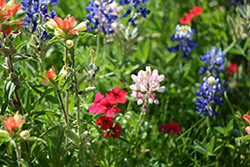 Editor's Note: For when you are able to get out and about, there might still be some wildflowers to take pictures of. We wanted to share this with hope that our shelter-in-place orders don't last too long that we still get to enjoy Spring and what Mother Nature has given us to enjoy. These are guildelines to follow when taking pictures of wildflowers. Always remember to respect nature and, if you are out and about, social distancing.
Editor's Note: For when you are able to get out and about, there might still be some wildflowers to take pictures of. We wanted to share this with hope that our shelter-in-place orders don't last too long that we still get to enjoy Spring and what Mother Nature has given us to enjoy. These are guildelines to follow when taking pictures of wildflowers. Always remember to respect nature and, if you are out and about, social distancing.
By Paul Schattenberg, Texas A&M Agrilife Communications
With wildflowers sprouting up all over roadsides throughout Texas during springtime there are ample opportunities to take photos. But shutterbugs should be careful, as well as respect private property and nature, when trying to find the right spot for that perfect shot, said Texas A&M AgriLife Extension Service experts.
Stopping to smell – and shoot – the flowers
The Texas Department of Public Safety, DPS, encourages motorists not to impede traffic and to be cautious when slowing down or stopping to enjoy the sight of wildflowers on the roadside, said Bev Kellner, AgriLife Extension traffic safety program manager, College Station.
“If you decide to stop to admire the flowers or take photos, choose areas with light traffic conditions to pull off,” she said.
Kellner also suggested wildflower fans follow these additional safety tips from the DPS:
• Signal before leaving or entering the roadway.
• Park off improved roadway shoulders and parallel to the road in the direction of traffic.
• Don’t cross lanes of traffic on foot to get to the flowers.
• Obey signs that prohibit parking on a particular stretch of roadway.
“Remember failure to follow the rules of the road at any time of the year could result in you getting a ticket,” Kellner said.
Legal considerations on property
While there is no longer a law against picking wildflowers in Texas, including the most popular of all – the bluebonnet – there are still laws against trespassing and damaging or destroying rights of way and government property. Additionally, it is a Class C misdemeanor to collect plants, animals or rocks from state parks.
She said those wanting to take photos should see if the property they want to be on is privately owned.
“If it’s private property, you need to get permission before you proceed,” she said. “Otherwise you may be guilty of trespassing. But don’t take it personally if some landowners don’t allow you on their property, as they may have legitimate reasons for denying you permission.”
Lashmet also noted while picking a few wildflowers is legal, people shouldn’t dig up large patches of them or drive their vehicle onto fields of flowers.
“People should treat other people’s property with the same respect they would treat their own,” she said.
Good manners — and sense — help make good photos
“Often people will trample on wildflowers to get to what they consider that ideal spot for their picture,” said Lou Kellogg, an avid nature photographer and 16-year member of Bexar County Master Gardeners, a volunteer horticulture association supporting AgriLife Extension. “But it’s usually possible to find open areas, or a pathway around or between the wildflowers, so you don’t damage them getting to a preferred spot.”
Kellogg said he prefers using a tripod for wildflower photography.
“Using a tripod will help you get sharper photos and it also makes you a little more concerned about camera position and photo composition,” he said. “It also helps keep you from wandering around and snapping a lot of pictures, which is more likely to harm the flowers and disturb your surroundings.”
He said in his experience the best time to take wildflower photos is at dawn or dusk “when the colors are more vivid,” but realizes most people have to shoot their photos whenever their personal or family schedule allows and an opportunity arises.
“Basically, as much as possible, leave everything the way you found it. Be careful not to damage plants or trees. If you’re setting up props for a shoot, pick up after yourself and, if it’s a popular spot, keep out of the way of other people taking photos.”
Lou Kellogg also cautioned against taking risks to get a different angle for a photo.
“Some people may climb trees or stand on top of unstable objects to get a picture, but that can be really dangerous,” he said. “Just remember to be vigilant and use common sense while getting your photos.”
Kellogg said it’s also important for adults wanting to photograph their children in a field of wildflowers to take the time to explain why they should respect nature and property.“Another thing to consider is your subject doesn’t have to be directly in the flowers to obtain a good photo,” he said. “You can have your subject in front of or behind the flowers and still make it appear he or she is actually in them. That way you don’t have to worry about damaging the flowers. You just have to use a little perspective.”
Texas Highways magazine has two online articles, “Wildflowers of Texas” and “Everything You Need to Know About Texas Wildflower Season” to help wildflower aficionados identify and locate the state’s abundant wildflowers.













